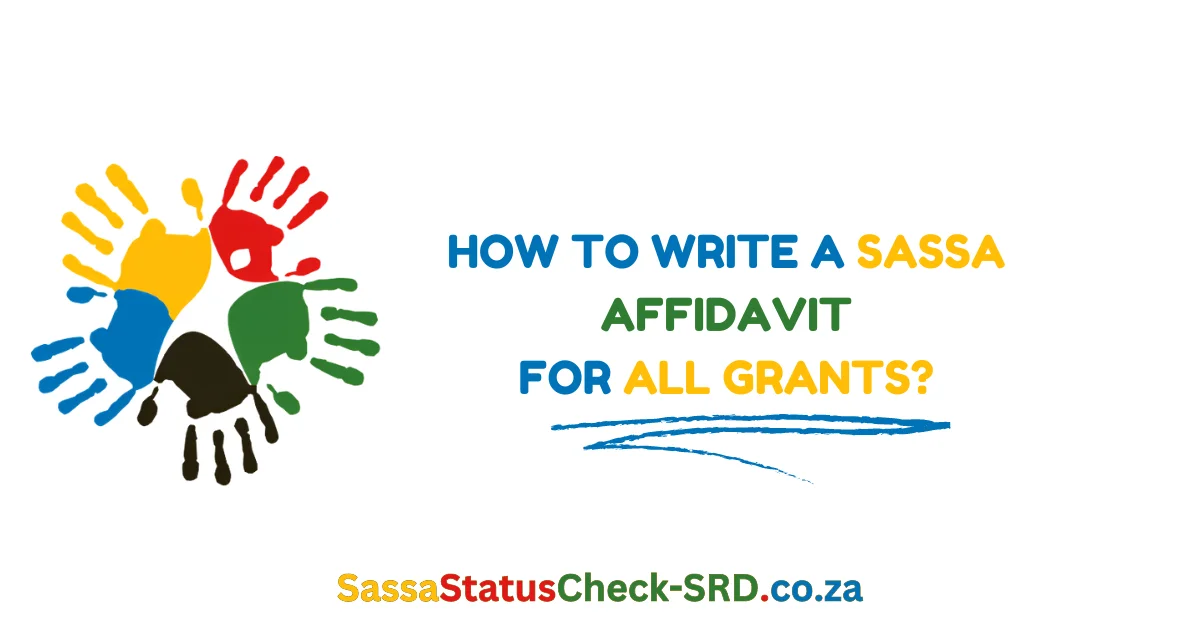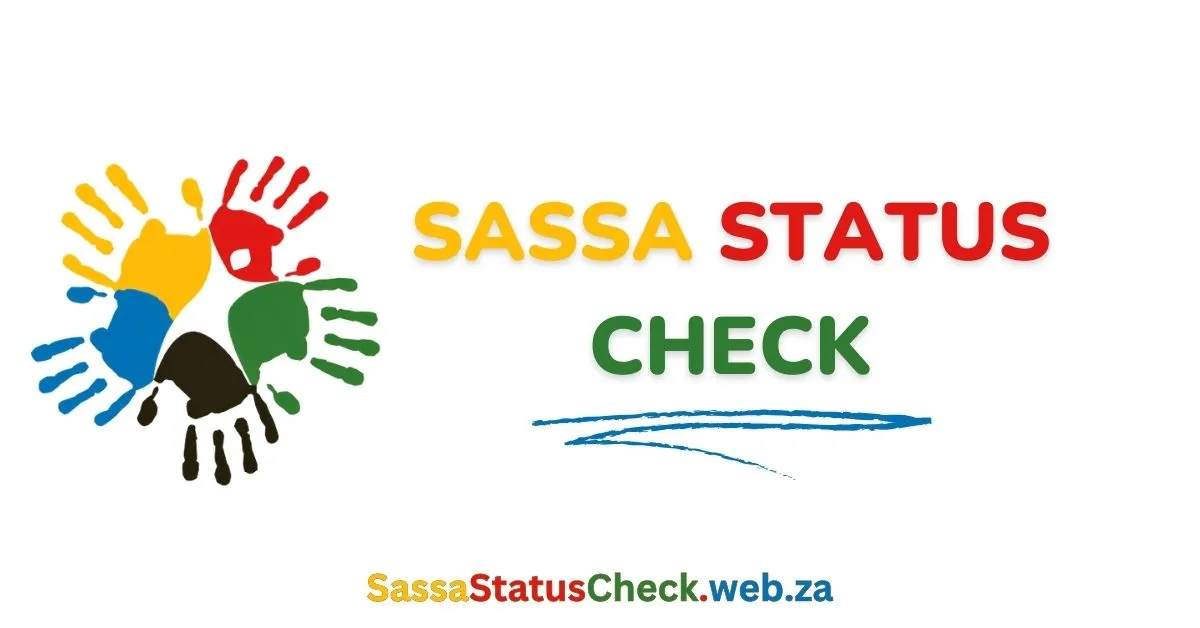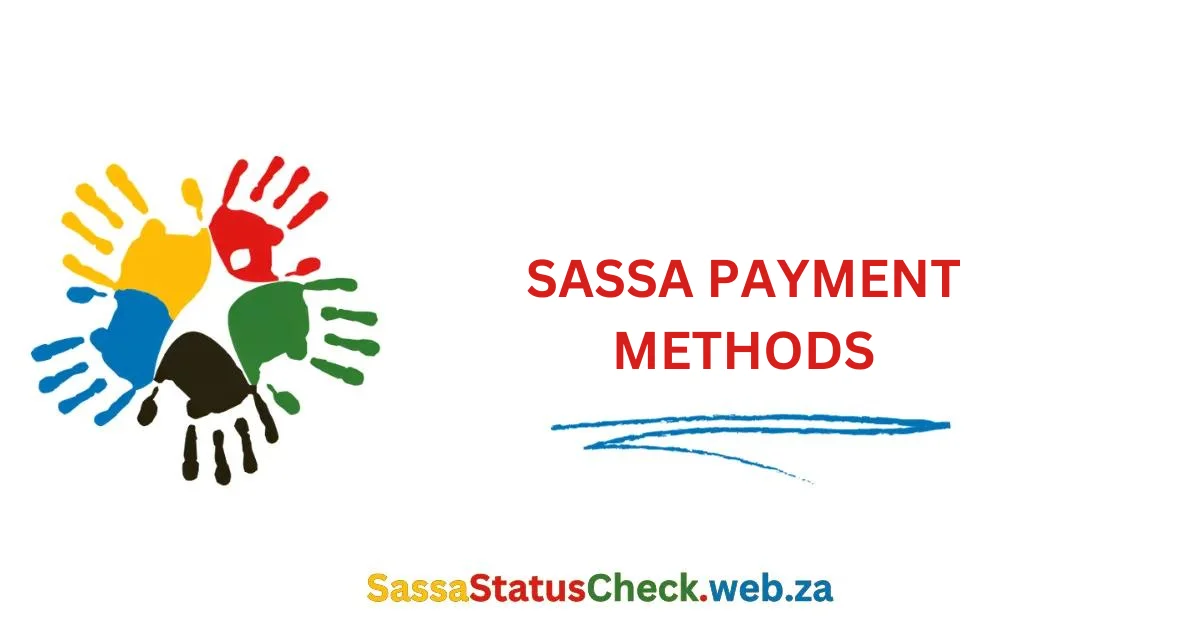How to Write a SASSA Affidavit for All Grants in 2024?
Have you ever felt lost when filling out a SASSA affidavit? You’re not alone! As someone who’s been through the South African Social Security Agency (SASSA) grant application process, I know it can be tricky.
But don’t worry – I’m here to help you understand how to write a SASSA affidavit for any grant in 2024. Let’s break it down together!
Table of Contents
- 1 How to Write a SASSA Affidavit for All Grants in 2024? (Quick Answer)
- 2 What’s a SASSA Affidavit?
- 3 Why SASSA Takes These Papers Seriously?
- 4 Different Types of SASSA Grants
- 5 How to Write Any SASSA Affidavit?
- 6 Step-by-Step Guide to Writing Your Affidavit
- 7 Common Mistakes to Avoid
- 8 Tips for a Great Affidavit
- 9 Making It Official
- 10 How to Submit Your Affidavit?
- 11 SASSA Affidavits Going Digital
- 12 Wrapping Up:
- 13 FAQs: Your Questions Answered
How to Write a SASSA Affidavit for All Grants in 2024? (Quick Answer)
To write a SASSA affidavit for all grants in 2024:
- Choose the correct form for your specific grant.
- Gather necessary documents (ID, proof of residence, financial info).
- Fill out the form completely and accurately.
- Include your full name, ID number, address, and contact details.
- Clearly state which grant you’re applying for.
- Provide detailed, honest information about your situation.
- Use simple, clear language.
- Double-check for errors or missing information.
- Sign the affidavit in front of a Commissioner of Oaths.
- Submit the sworn affidavit with your grant application at your local SASSA office.
Remember to update your affidavit if your circumstances change.
What’s a SASSA Affidavit?
A SASSA affidavit is a really important paper. It’s like a promise you make to SASSA that everything you’re saying about why you need a grant is true. Think of it as your chance to tell your story and show why you need help.
Why SASSA Takes These Papers Seriously?
Imagine you’re in charge of giving out money to people who need it. You’d want to make sure you’re giving it to the right people, right? That’s why SASSA is so careful with these affidavits. They use them to make sure they’re helping those who really need it.
Different Types of SASSA Grants
SASSA offers several types of grants. Each one has its own special affidavit. Let’s look at the main ones:
Older Persons Grant
This is for our older citizens. If you’re applying for this, your affidavit needs to show:
- Your age
- How much money you have (or don’t have)
Child Support Grant
If you’re taking care of kids, this grant might be for you. Your affidavit should talk about:
- The children you’re looking after
- Why they need this help
Disability Grant
Life can be tough if you have a disability. For this grant, your affidavit needs to explain:
- What your disability is
- How it affects your daily life
Grant-in-Aid
Sometimes people need extra help. If that’s you, your affidavit should say:
- Why you need more help
- What kind of help you need
War Veterans Grant
This is a special thank you to people who fought in big wars. Your affidavit should include:
- When and where you served
- Any proof you have of your service
Care Dependency Grant
If you’re caring for a child with a serious disability, this grant can help. Your affidavit needs to cover:
- The child’s condition
- How much care they need
Foster Child Grant
For foster parents, this grant offers support. Your affidavit should explain:
- Your foster situation
- Why the child needs this help
How to Write Any SASSA Affidavit?
Now, let’s talk about how to write these affidavits. Here are some tips that work for all types:
Important Information to Include
Every SASSA affidavit needs some basic info:
- Your full name (exactly as it is on your ID)
- Your ID number
- Where you live
- How to contact you
- Which grant you’re asking for
Keep It Neat and Clear
Think of your affidavit as a letter to SASSA. Keep it tidy and easy to read. Use headings if you need to, and number your points if you’re talking about more than one thing.
Write Like You Talk
Use simple words, like you’re explaining to a friend. Be clear and honest. Get to the point without using fancy words.
Step-by-Step Guide to Writing Your Affidavit
Ready to start writing? Here’s how:
1. Gather Your Information
Before you start, collect everything you’ll need:
- Your ID and other personal documents
- Medical records (if you’re applying for health-related grants)
- Money information
- Proof of where you live
2. Get the Right Form
SASSA has different forms for each grant. Make sure you have the right one. You can usually find these on the SASSA website or at your local SASSA office.
3. Fill It Out Carefully
Now, start filling out the form. Be careful with every part. If something doesn’t apply to you, write “N/A” – don’t leave blank spaces.
4. Check, Check, and Check Again
After you’re done, read it over twice. Look for spelling mistakes, missing information, or anything that’s not 100% true. Remember, this is a legal document – mistakes can cause problems.
Common Mistakes to Avoid
Even careful people can make mistakes. Here are some to watch out for:
Don’t Leave Things Out
Leaving parts blank is like turning in a test with missing answers. It won’t work out well.
Don’t Guess
If you’re not sure about something, don’t guess. It’s better to say you’re not sure or find out the right answer before you submit.
Don’t Forget to Sign
Forgetting to sign your affidavit is like sending a letter without your name. It won’t work!
Tips for a Great Affidavit
Want your affidavit to be really good? Try these tips:
Be Specific
The more details you can give, the better. Instead of just saying “I’m unemployed,” say something like “I lost my job at the factory in March 2023 when it closed down.”
Always Tell the Truth
Remember, SASSA can check your information. Telling the truth isn’t just right – it’s smart.
Ask for Help if You Need It
If you’re stuck, don’t guess. Ask for help at your local SASSA office or call their helpline at 0800 60 10 11. It’s better to get it right than to rush and make mistakes.
Making It Official
Your affidavit isn’t done until it’s sworn. Here’s what you need to know:
Where to Go
You can usually swear an affidavit at a police station, post office, or with a lawyer. Some SASSA offices also have people who can do this.
What Will Happen
The person there will ask you if everything in your affidavit is true. You’ll sign it in front of them, and they’ll put a stamp on it and sign it too.
Cost
Most places do this for free, but some might ask for a small fee. It’s good to check before you go.
How to Submit Your Affidavit?
You’ve written it and sworn it. Now it’s time to turn it in. Here’s how:
Where to Take It
Usually, you’ll take your affidavit to your local SASSA office when you apply for your grant. Some grants might let you do this online – check the SASSA website for the latest info.
Bring Extra Documents
Don’t forget to bring other papers you might need. This could be copies of your ID, medical records, or other important documents.
What Happens Next
After you turn it in, make a note of when you applied and any numbers they give you. This will help if you need to follow up later.
Keeping Your Affidavit Up to Date
Grants aren’t a one-time thing. You might need to update your affidavit:
When to Renew
Most grants need to be checked every year. Mark your calendar so you remember to submit a new affidavit when it’s time.
If Things Change
If something big changes in your life – like you move, get a job, or your health changes – you need to tell SASSA with a new affidavit.
How to Update
Usually, you can update your info at your local SASSA office. Bring your ID and any papers that show what’s changed.
SASSA Affidavits Going Digital
SASSA is slowly moving into the digital world. Here’s what you should know:
What’s Happening Now?
As of 2024, some grants let you apply online. This might include digital affidavits in the future.
Good and Bad Points of Going Digital
Doing things online could mean faster processing and less paperwork. But it also means you need internet access and know how to use computers.
Staying Informed
Keep checking the SASSA website for updates on digital submissions. If you’re not comfortable with technology, don’t worry – you can still do things the old-fashioned way.
Wrapping Up:
Writing a SASSA affidavit might seem hard, but with this guide, you’re ready to do it. Remember, this document is your chance to explain why you need help. Make it count, be honest, and be clear.
By following these steps and tips, you’re not just filling out a form – you’re taking an important step to get the support you need. And that’s something to be proud of.
So, take a deep breath, get your papers together, and start writing. You can do this!
FAQs: Your Questions Answered
Q: Can I use one affidavit for different SASSA grants?
No, each grant usually needs its own special affidavit. Always use the form made for the grant you’re applying for.
Q: What if I can’t read or write in English?
SASSA offices usually have people who can help you in your language. You can also bring a friend or family member you trust to help.
Q: Do I need to get my affidavit notarized?
No, you don’t need to get it notarized. Having it sworn by a Commissioner of Oaths is enough.
Q: Can I email my affidavit to SASSA?
As of 2024, most affidavits still need to be turned in in person. Check the SASSA website for the latest information on doing things online.
Q: What if I make a mistake on my affidavit?
If you realize you’ve made a mistake, contact SASSA right away to fix it. Giving wrong information, even by accident, can cause serious problems.
Remember, if you need more help, you can always contact SASSA directly or visit your local office. They’re there to help you through this process!

I’m Thandiwe Mkhize, dedicated to promoting social welfare awareness in South Africa. My background in social work fuels my passion for helping vulnerable communities access vital information about their social grants through my website https://sassastatuscheck-srd.co.za/



![SASSA Payment Dates for 2024/2025 [Updated SASSA Payment Schedule] SASSA Payment Dates for 2024/2025](https://sassastatuscheck-srd.co.za/wp-content/uploads/2024/03/SASSA-Payment-Dates-for-20242025-1.webp)
![The Complete Guide to SASSA Social Grants Types [2024] The Complete Guide to SASSA Social Grants in South Africa](https://sassastatuscheck-srd.co.za/wp-content/uploads/2023/09/The-Complete-Guide-to-SASSA-Social-Grants-in-South-Africa.jpg)
![SASSA Change Phone Number for SRD Grant Online in [2024] SASSA Change Phone Number](https://sassastatuscheck-srd.co.za/wp-content/uploads/2023/11/Your-paragraph-text-5-1.webp)
![SASSA Change Banking Details for SRD R350 [2024] How to Change Banking Details for SASSA](https://sassastatuscheck-srd.co.za/wp-content/uploads/2023/10/How-to-Change-Banking-Details-for-SASSA.webp)
